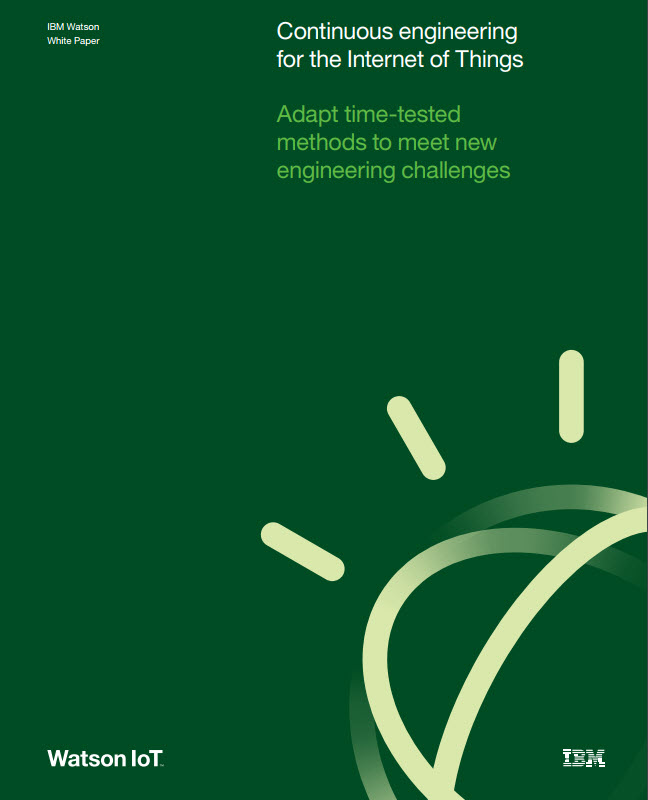Sponsored
An Interactive Whitepaper: Continuous engineering for the Internet of Things

Provided byIBM
The hype around the Internet of Things is now rapidly giving way to the reality of implemented products and services.
Analyst firm IDC predicts that the worldwide IoT market spend will grow from approximately USD 690 billion in 2015 to USD 1.46 trillion in 2020 with a compound annual growth rate of 16.1 percent. The installed base of IoT endpoints will grow from 12.1 billion in 2015, exceeding 30 billion in 2020.
Connectivity has moved from being an interesting feature to being a so-called “price of entry” requirement to achieve competitive product value and differentiation in many of today’s markets. IoT products and services can range from the basic to the critical: cost-critical, availability-critical, brand-critical, even safety-critical. Therefore, the makers of products and services must understand and respond appropriately to the challenges of engineering for the IoT.
As connectivity increases the capabilities of IoT products and services, so it also increases their complexity. New capabilities bring new failure modes. Added complexity—unless managed appropriately—can increase the likelihood of failures occurring. Furthermore, the consequences of failure can themselves be hard to predict.
Therefore, increasingly critical products and services require robust IoT engineering. The primary challenges include:
- Delivering compelling functionality (where the requirements might be continuously changing)
- Delivering appropriate dependability, in the form of safety (freedom from harm), reliability (availability of services) and security (freedom from intrusion, interference or theft)
- Delivering the solution in an open context—where some of the technologies and components that contribute to the solution are not under direct commercial or engineering control
- Delivering the solution with appropriate speed and at appropriate cost to respond to competitive threats and changing market demand
Download the full white paper today<
Keep Reading
Most Popular
Large language models can do jaw-dropping things. But nobody knows exactly why.
And that's a problem. Figuring it out is one of the biggest scientific puzzles of our time and a crucial step towards controlling more powerful future models.
How scientists traced a mysterious covid case back to six toilets
When wastewater surveillance turns into a hunt for a single infected individual, the ethics get tricky.
The problem with plug-in hybrids? Their drivers.
Plug-in hybrids are often sold as a transition to EVs, but new data from Europe shows we’re still underestimating the emissions they produce.
Google DeepMind’s new generative model makes Super Mario–like games from scratch
Genie learns how to control games by watching hours and hours of video. It could help train next-gen robots too.
Stay connected
Get the latest updates from
MIT Technology Review
Discover special offers, top stories, upcoming events, and more.